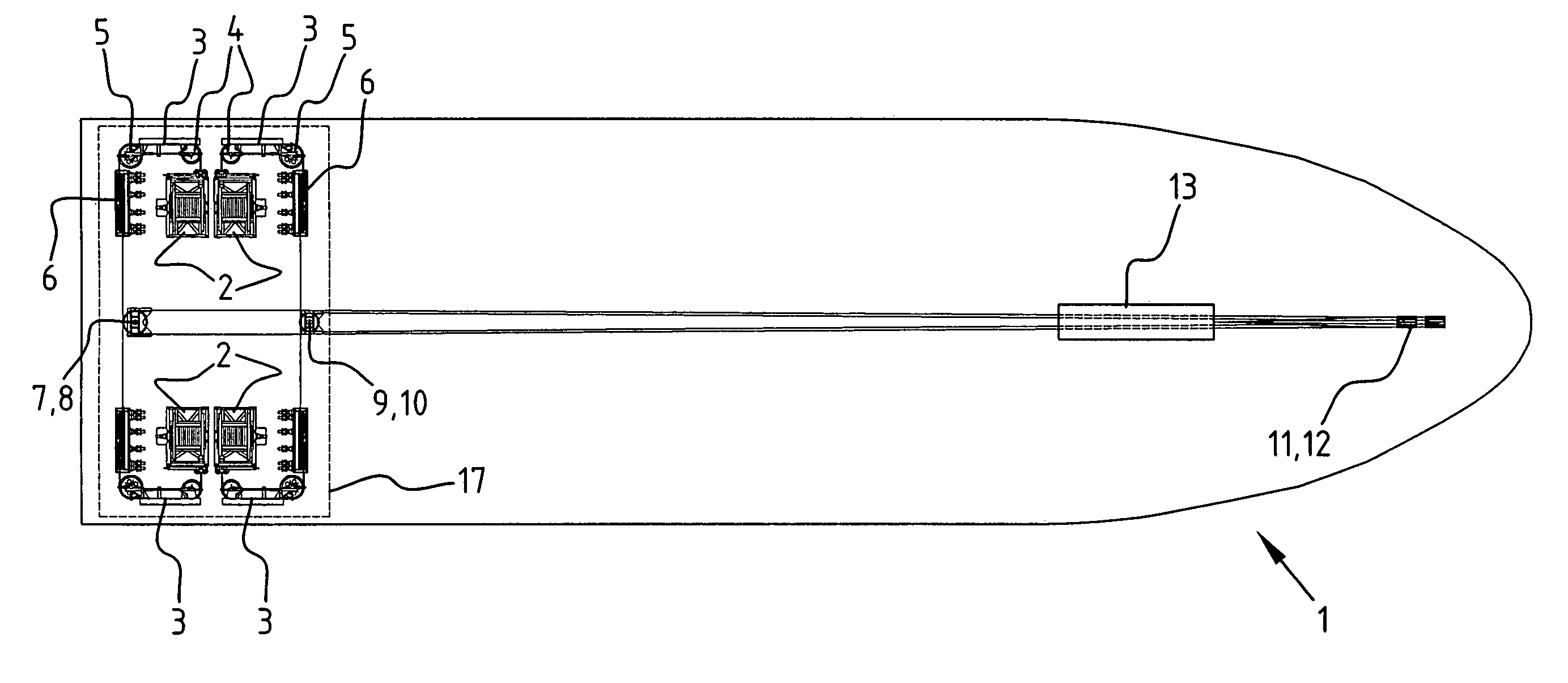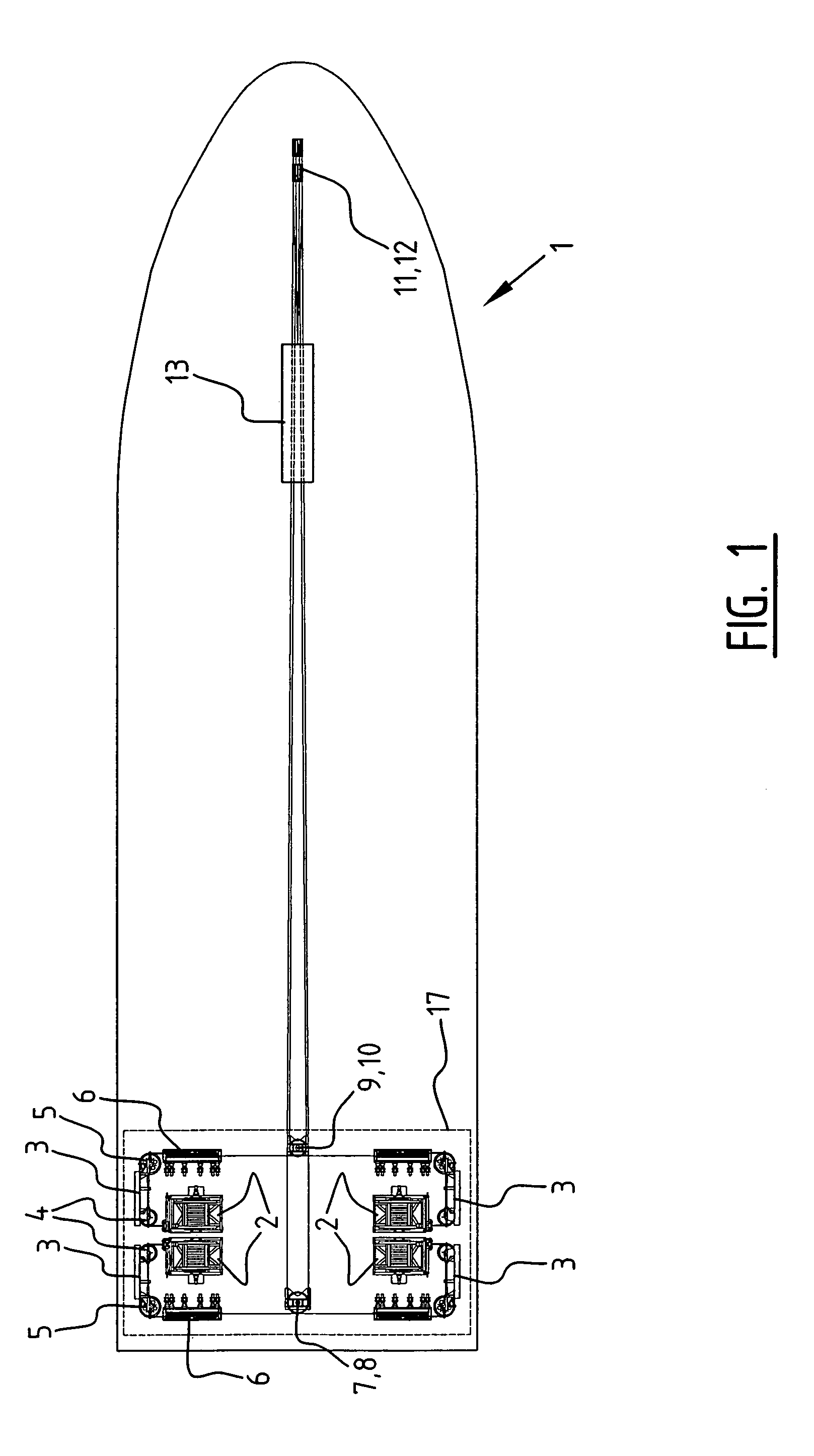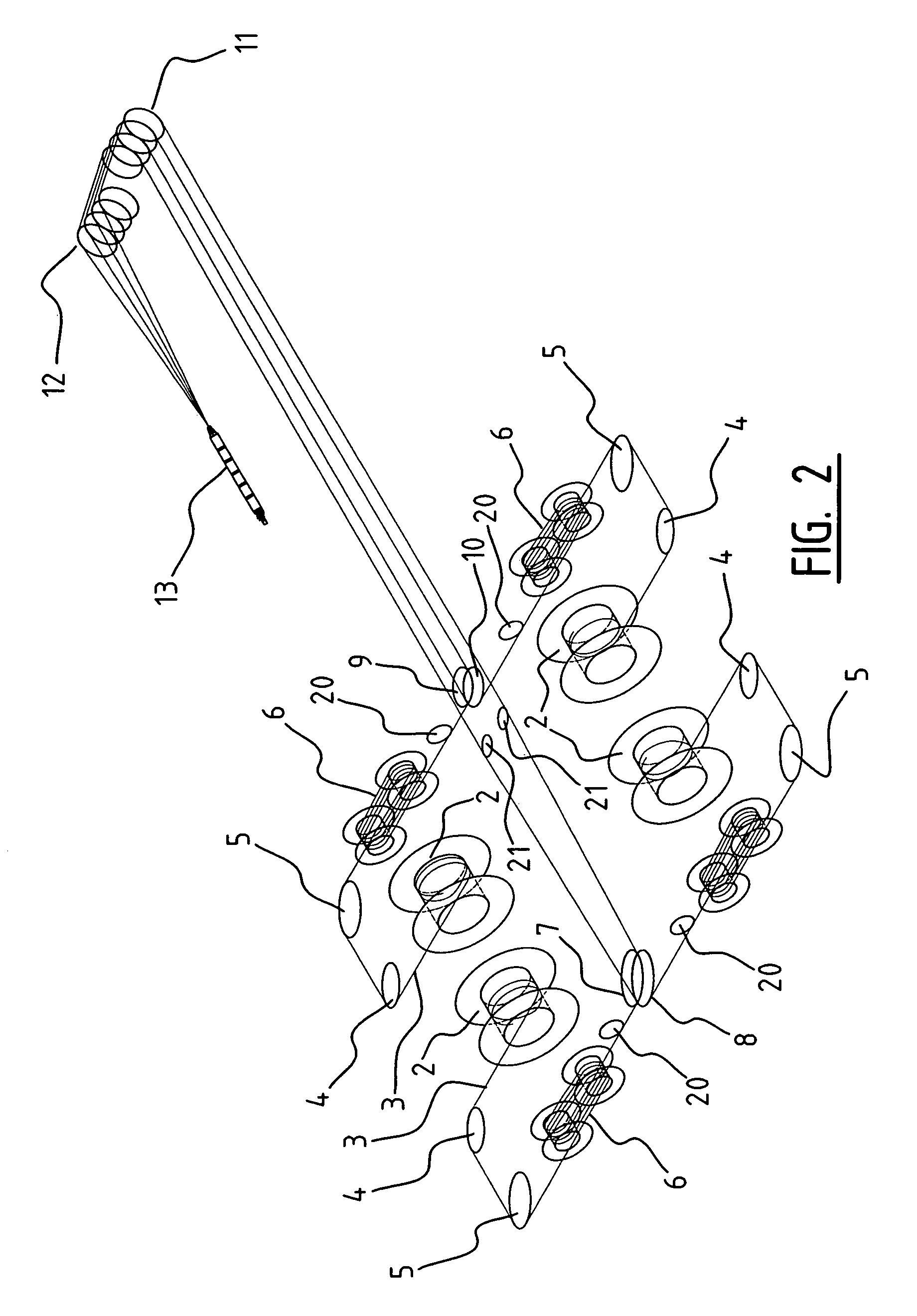Abandonment and recovery system and method, and cable connector
a technology of cable connectors and recovery systems, applied in cable-laying vessels, pipe laying and repair, hoisting equipment, etc., can solve the problems of inability to solve extra capacity, inability to rotate multi-cable assemblies, and inability to handle loads of 500 t or more, so as to improve the positioning accuracy of connecting means, reduce the number of cable rotors, and reduce the effect of cable tension and torsion
- Summary
- Abstract
- Description
- Claims
- Application Information
AI Technical Summary
Benefits of technology
Problems solved by technology
Method used
Image
Examples
Embodiment Construction
[0036]FIG. 1 shows schematically a top view of a vessel which is provided with an A&R system according to a preferred embodiment of the invention. The winch room 17 is situated at one end of the vessel 1. In the winch room 17 four storage winches 2 and four traction winches 6 are provided. From each storage winch 2 a cable 3 is guided via travelling sheaves 4, 5 to traction winch 6. Each cable 3 is brought in the axial direction of the vessel via sheaves 7, 8, 9, 10, respectively. The four cables 3 leave the winch room in the longitudinal direction of the vessel, from where they are guided to the other end of the vessel. At this other end return sheaves 11, 12 direct the cables back into the opposite direction. Each cable 3 is connected with its first end to a storage winch 2, and with its second end to a cable connector 13. The cable connector will be discussed in more detail when referring to FIGS. 3 and 4. A perspective view of this winch system with four cables and cable connect...
PUM
 Login to View More
Login to View More Abstract
Description
Claims
Application Information
 Login to View More
Login to View More - R&D
- Intellectual Property
- Life Sciences
- Materials
- Tech Scout
- Unparalleled Data Quality
- Higher Quality Content
- 60% Fewer Hallucinations
Browse by: Latest US Patents, China's latest patents, Technical Efficacy Thesaurus, Application Domain, Technology Topic, Popular Technical Reports.
© 2025 PatSnap. All rights reserved.Legal|Privacy policy|Modern Slavery Act Transparency Statement|Sitemap|About US| Contact US: help@patsnap.com



